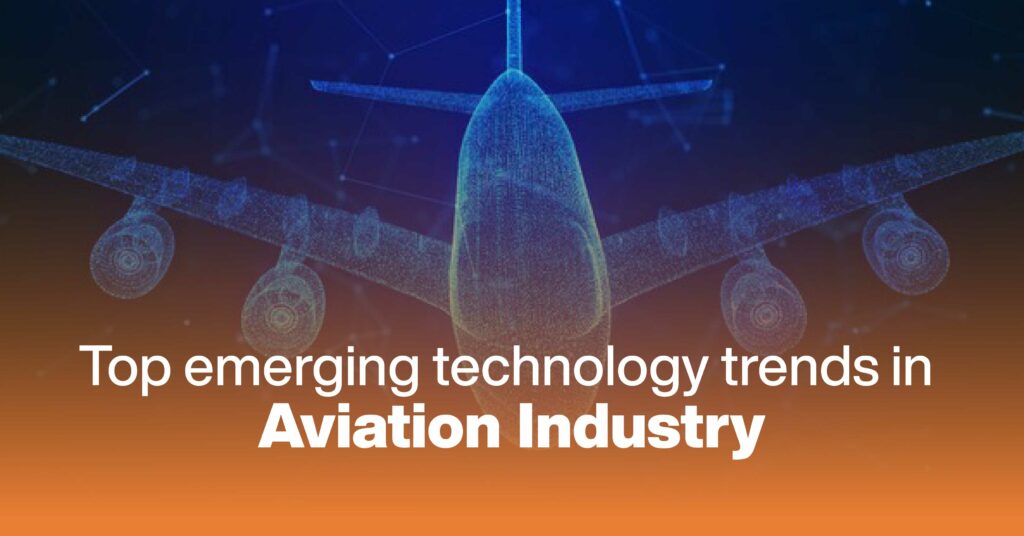The aviation industry has always been at the forefront of technological advancements. From the invention of the airplane to the introduction of autopilot systems, the industry has constantly embraced innovation. In recent years, several emerging technology trends have taken center stage and are transforming the way the aviation industry operates. Let’s explore these trends and understand their impact.
Top Emerging Technology Trends In Aviation Industry
1. Artificial Intelligence and The Aviation Industry
Artificial intelligence (AI) is revolutionizing the aviation industry in various ways. AI-powered systems are being used for route optimization, weather forecasting, air traffic control, and aircraft maintenance. Machine learning algorithms can analyze vast amounts of data to make predictions and identify patterns, enabling airlines to improve efficiency and safety. Additionally, AI-powered chatbots and virtual assistants are enhancing customer service by providing instant and personalized responses to queries.
2. Benefits Of 5G Technology For Aviation
The advent of 5G technology is set to transform the aviation industry by providing faster and more reliable connectivity. With its high speeds, low latency, and capacity to support numerous devices simultaneously, 5G enables real-time communication and data transfer. This is crucial for applications such as remote monitoring of aircraft systems, efficient air traffic management, and seamless in-flight entertainment experiences for passengers.
3. How Are Drones Being Utilized In The Aviation Industry
Drones, also known as unmanned aerial vehicles (UAVs), have gained significant traction in the aviation industry. They are being used for various purposes, including aerial photography, cargo delivery, and inspection of aircraft and infrastructure. Drones offer cost-effective and efficient solutions for tasks that were previously challenging or time-consuming. Their ability to access hard-to-reach areas and capture high-quality imagery is revolutionizing the way the industry approaches inspections and maintenance.
4. Sustainability And Eco-friendly Technologies Being Integrated Into Aviation
The aviation industry is increasingly focused on adopting sustainable and eco-friendly technologies. Airlines are exploring alternative fuels such as biofuels, which have lower carbon emissions compared to traditional jet fuels. Electric and hybrid aircraft are also being developed, aiming to reduce the industry’s reliance on fossil fuels. Furthermore, airports are implementing energy-efficient practices, such as the use of solar power and efficient lighting systems, to minimize their environmental impact.
How Can Professionals In The Aviation Industry Prepare For These Technology Trends?
As technology continues to shape the aviation industry, professionals must adapt and stay abreast of the latest trends. Continuous learning and upskilling are essential to thrive in this rapidly evolving landscape. Aviation professionals can attend industry conferences, participate in training programs, and join professional associations to stay updated on emerging technologies. Additionally, fostering a mindset of innovation and embracing new technologies will help professionals stay ahead of the curve.
Conclusion
The aviation industry is undergoing a profound transformation, led by emerging technology trends. From the adoption of AI and 5G to the utilization of drones and the integration of sustainable practices, these trends are reshaping the industry’s landscape. It is crucial for professionals in the aviation industry to embrace these technologies, adapt, and continuously upgrade their skills to thrive in this dynamic environment. With the right mindset and support from industry leaders like Garg Aviations, the aviation industry is well-equipped to harness the full potential of these emerging technologies.
Frequently Asked Questions
1. How is artificial intelligence impacting the aviation industry?
Artificial intelligence is transforming the aviation industry by optimizing routes, enhancing air traffic control, improving aircraft maintenance, and providing personalized customer service.
2. What are the key benefits of 5G technology for aviation?
5G technology offers faster and more reliable connectivity, enabling real-time communication, efficient air traffic management, and immersive in-flight entertainment experiences.
3. How are drones being utilized in the aviation industry?
Drones are used for aerial photography, cargo delivery, and inspection of aircraft and infrastructure, offering cost-effective and efficient solutions for various tasks.
4. How are sustainability and eco-friendly technologies being integrated into aviation?
The aviation industry is embracing alternative fuels, electric aircraft, and energy-efficient practices at airports to reduce its environmental impact and promote sustainability.
5. How can professionals in the aviation industry prepare for these technology trends?
Professionals should engage in continuous learning, attend industry conferences, and stay updated on emerging technologies to adapt and thrive in the rapidly evolving aviation industry.
In summary, the aviation industry is experiencing significant advancements in technology. AI, 5G, drones, and sustainability practices are transforming the way airlines operate. Professionals in the industry must embrace these trends, upgrade their skills, and be open to innovation. With the support of industry leaders like Garg Aviations, the aviation industry is set to achieve new heights.

